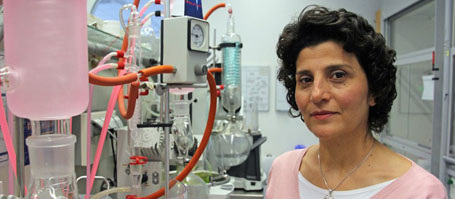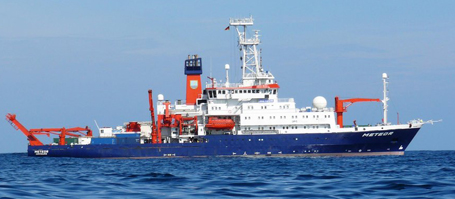The research team suspects that an increase in carbon dioxide (CO2), as well as the warming of the Southern Hemisphere affected the change of climate in Australia. The research results have now been published in the international journal Nature Communications.
A massive increase in monsoon rainfall started about 13,000 years ago. At this time the Northern Hemisphere was characterized by relatively cold climate conditions, while in the ice cores of Antarctica a significant warming and increase of the CO2 concentration can be observed. The research team concludes from these results that the combination of the warming of the Southern Hemisphere and the increase of atmospheric carbon dioxide had an increasing effect on the development of low pressure areas above the Australian continent during the Australian summer months. As a consequence, a major part of the rainfall of the tropical convergence zone fell on Northwestern Australia.
The intensity of the monsoon rainfall and the resulting inflow of sediment into the eastern part of the Indian Ocean through the rivers of Northwest Australia were assessed using high-resolution elementary analysis with the help of X-ray fluorescence scanners. From the ratio of different elements, for example, potassium and calcium, researchers can draw conclusions about the amount of the sediment load from rivers and the intensity of the rainfall. The age of the sediment cores was assessed with precise carbon isotope dating.
The German research ship “Sonne”(sun) and its French counterpart “Marion Dufresne” drilled for the four analyzed sediment cores off the coast of North-West Australia. Sediment cores are a climate archive of the ocean which store the climatic changes of the past. With the help of the climate information gained by the research team from the sediment cores they reconstructed the climate history of North-West Australia for the last 20,000 years with high temporal precision. The results of the study are of great importance for predictions of the development of Australia’s future climate, which will also be characterized by a great increase in atmospheric carbon dioxide concentration and the warming of the Southern Hemisphere.
Original publication:
Kuhnt, W., Holbourn, A., Xu, J., Opdyke, B., De Deckker, P., Röhl, U., and Mudelsee, M. (2015): Southern Hemisphere control on Australian monsoon variability during the late deglaciation and Holocene. Nature Communications 6:5916, http://dx.doi.org/10.1038/ncomms6916.
Contact:
Prof. Dr. Wolfgang Kuhnt, Institute for Geosciences at Kiel University, Tel.: (0431) 880-2924
wk@gpi.uni-kiel.de
…



